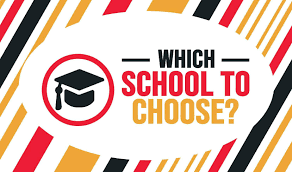Last fall my daughter started Kindergarten and the reality hit me like a ton of bricks. As a parent I was processing a myriad of emotions and as an educator, I am acutely aware of the importance of a proper placement. In addition to ruminating over the warp speed of the last five years, I became immersed in data and inundated with paperwork for school admissions, open enrollment, charter school lotteries and private school applications. Here’s what I took away from my weeks of soul and school searching.
First visit your school district’s main office. It is a good place to start your research because they will have information on all the public schools in your district. When deciding on a school, assess your family’s requirements, especially if there are any special needs. The most common inquiries include; is there before and/or after school care provided and at what cost? Is transportation available? Are friends or siblings attending the same school? In case you decide on a school outside of your designated one, ask about the procedure for an intradistrict transfer.
I highly recommend visiting a school of interest. If a school isn’t friendly about a pre-enrollment visit, that might be a sign of how they’ll respond when you’re a parent there.
While at the school, try to meet the principle, vice principle, teachers and any parents helping around campus. Check out the work on the walls, overall cleanliness, and how adults and children interact. Also, ask what type of involvement the school wants from parents.
You may also want to ask:
What extra-curricular activities and outreach programs are available?
How much homework is assigned?
How are behavior problems handled?
Is there a dress code?
Is there a handbook?
What is the deadline for enrollment?
Are there any other dates that need to be adhered to?
What is the student-to-teacher ratio?
What is the school’s API (Academic Performance Index) score?
I warn against getting too caught up in the numbers. While a high API is telling (a preferred score is anything over 800) there are other considerations to a well-rounded education. I find, as a public school teacher, that the emphasis on scores has become so significant that teaching the test often becomes a primary goal. I believe the love of learning needs to be at least as important.
To compare schools in your area, you can go to www.schooldigger.com. Great Schools, www.greatschools.org, also rates schools and has lots of other information and advice for parents.
Make sure you’ve got all the necessary documentation when the time comes to enroll. Public schools will require proof of residency, a copy of your child’s birth certificate and vaccination records. Parochial schools may ask for additional information regarding religious affiliation and documentation.
If you are looking at private schools, there may be extra steps required, like interviews, testing and letters of recommendation. If you are concerned about the expense, inquire about financial assistance.
It’s always better to be safe than sorry, so have a backup plan. Have a second or even third school choice.
Getting your child in the right school is only half the battle. Staying actively involved and communicating often with your child and his teacher is also key to academic success.



